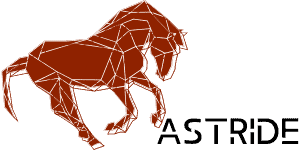The first horse races, or horse races, existed from the highest antiquity. In Greece, the competitors of the Olympic Games fight for glory, but in Rome, in Byzantium, the circus games arouse popular passions and even end in battles.
In the first centuries and early Middle Ages, the races took part in Legends, warrior feats, and ” gesture.” They already exist under Charlemagne.
It is the time of Bayard, winner of a race endowed by the emperor with 400 silver marks. Then they take on, like tournaments, the aspect of challenges between greats. Pride or magnificence is their motive. Hugues Capet gives, in a royal present, to his brother-in-law Athelstane, Anglo-Norman King, a lot of stallions probably Arab.
But the Crusades will reveal to the West the Arab Horse and, consequently, open, a few centuries later, the real era of codified and regulated races. Richard the Lionheart supported the Oriental breeds and instituted the first English race on the moor of Epsom with 40 pounds of gold. It includes all the benefits that domestic livestock can derive from an infusion of oriental blood. It imports Arab stallions that it crosses with selected local mares.
Over the centuries that followed, the importation of Arab blood continued, without method, in a disorderly way, but favored among the English, with the improvement of the horse race, the outbreak of the first symptoms of the” sporting spirit “Henry VIII create famous prizes: The Silver St George’s Bell and the” bell-tower races “.
The first law regulating race dates from 1512.
Then the “plates,” plateaux of goldsmiths, are added to the precious horse trophies — the prosperity of the races, which is growing. The popularity of Steeple races, organized from village to village, where one crosses all the natural obstacles that present themselves, develops in all the taste of the sport. Jacques I (1566-1625) created the first hippodrome in Newmarket.
Guillaume III (1650-1702) created The Studbook, a directory of genealogies still in force. We will see the great ancestors of the English longline and Universal thoroughbred appear. Famous Trinity, with picturesque origins, that of Byerley Turk, Darley Arabian, and Godolphin, who will have the honors of the first ” stud-book.”In England, these three stallions ran and especially procreated brilliantly at the stud farm.
France, because it had a rich past of epics, warrior prowess and heroic acts where the horse held a prominent place, had the means to take its place. Louis XIV allowed events of the kind “bet contested” between two great nobles on long courses across the fields. Under Louis XVI, thanks to persistent Anglomania, the French races progressed.
In 1750 was founded the jockey-club, an aristocratic club, which will serve as a model for its foreign counterparts, notably the second in date, founded eighty-three years later, the French jockey-club.
There is no international federation of the various owner and jockey organizations. In every country that organizes horse racing, there is a multitude of owner organizations and jockeys. Periodical publications on horse racing include a directory of pedigrees of horses, such as the British General Stud Book founded in 1791 or studies on particular breeds such as Racing Calendar founded in 1727.
The oldest stable is that of Newmarket, Suffolk (England), founded in 1660 by King Charles II and elevated to the status of National Stud after World War II. Newmarket also hosts the headquarters of the British jockey club.
As a primarily professional Sport, horse racing is not included in the Olympic Games, although the C. I. O.’s change of attitude towards amateur sport may lead to the path opened up by basketball or tennis, and to the recognition of horse racing as an Olympic sport.
